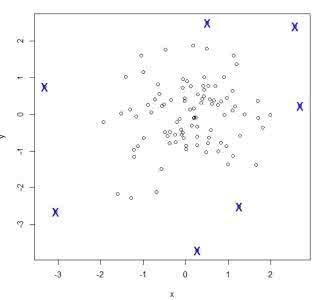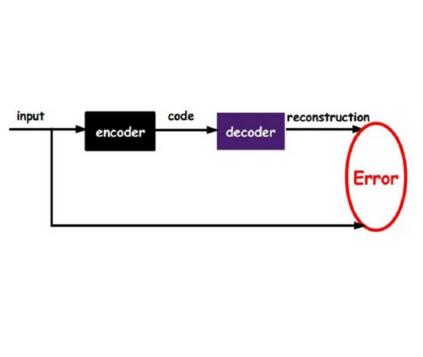In the digitization of energy systems, sensors and smart meters are increasingly being used to monitor production, operation and demand. Detection of anomalies based on smart meter data is crucial to identify potential risks and unusual events at an early stage, which can serve as a reference for timely initiation of appropriate actions and improving management. However, smart meter data from energy systems often lack labels and contain noise and various patterns without distinctively cyclical. Meanwhile, the vague definition of anomalies in different energy scenarios and highly complex temporal correlations pose a great challenge for anomaly detection. Many traditional unsupervised anomaly detection algorithms such as cluster-based or distance-based models are not robust to noise and not fully exploit the temporal dependency in a time series as well as other dependencies amongst multiple variables (sensors). This paper proposes an unsupervised anomaly detection method based on a Variational Recurrent Autoencoder with attention mechanism. with "dirty" data from smart meters, our method pre-detects missing values and global anomalies to shrink their contribution while training. This paper makes a quantitative comparison with the VAE-based baseline approach and four other unsupervised learning methods, demonstrating its effectiveness and superiority. This paper further validates the proposed method by a real case study of detecting the anomalies of water supply temperature from an industrial heating plant.
翻译:在能源系统数字化过程中,人们越来越多地利用传感器和智能仪表来监测生产、运行和需求。根据智能仪表数据检测异常现象对于早期确定潜在风险和异常事件至关重要,这可以作为及时采取适当行动和改进管理的基准。不过,能源系统的智能仪数据往往缺乏标签,含有噪音和各种模式,而没有明显的周期性。与此同时,不同能源情景中的异常现象定义模糊,以及高度复杂的时间相关性,对发现异常现象提出了巨大挑战。许多传统的不受监督的异常现象检测算法,如基于集群或远程模型,对噪音并不强大,没有在时间序列中充分利用时间依赖性以及多种变量(传感器)的其他依赖性。本文建议采用一种不受监督的异常检测方法,其依据是动态自动自动自动电解码和关注机制。与此同时,从智能计中得出的“脏”数据、我们的方法前检测缺失的值和在培训中缩小其贡献的全球性异常值。这份文件对基于甚低频基线的方法进行了定量比较,并且没有在时间序列中充分利用时间序列中的时间依赖性依赖性以及多种变量(传感器)中的其他依赖性。本文建议采用一种不受监控的异常性异常性的方法,其根据动态自动自动自动自动电算法来验证电算法,以检验厂供暖化温度测定方法,以证明其效力和反常温变压法。




